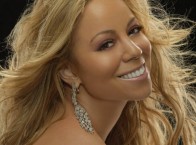Sheikh Hasina Wazed, the current Prime Minister of Bangladesh, the daughter of Bangladesh's first President Sheikh Mujibur Rahman, is the longest serving prime minister in the history of the country. Here are some facts about the Bangladesh politician:
- Hasina is the 10th Prime Minister of Bangladesh and the longest serving prime minister in the history of the country. Her political career has spanned more than four decades.
- She was born Sheikh Hasina, on September 28, 1947, in Tungipara, East Pakistan, to Sheik Mujibur Rahman and Sheik Fazilatunnesa Mujib. She has a younger sister Sheikh Rehana
- After her schooling at Azimpur Girls’ High School, she completed her higher secondary education at Government Intermediate College and later graduated from Eden Mohila College of Dhaka University in 1973. While at Intermediate College she was elected vice-president of the College Students Union for the term 1966-67.
- As a child she was deprived of quality time with her father due to his political activities. He would either be sleeping when at home or busy with his political campaign or at times in jail, as a result they hardly met each other. She doesn’t ever remember calling him or didn’t know how to address her father.
- When at school replying to a question about Ayub Khan, the military dictator, she wrote her political views about him rather than textbook answer. She even went the extent of sacrificing 20 marks in the exam rather than read any think about Pakistan.
- She was married to M.A. Wazed, a prominent nuclear scientist in 1968 and they have two children. The son, Sajeeb Wazed Joy, is a businessman, politician and the daughter Saima Wazed Hossain is an autism activist.
- Hasina and her son were provided political asylum by India, when her father and most of her family members were assassinated on August 15, 1975. She was spared as she was in Germany with her husband, who was working as nuclear physicist.
- She was in exile for six years and returned to Bangladesh on May 17, 1981, after she was elected as the leader of Awami League Party.
- Her unpopular opinion landed her in trouble and throughout 1980s she was in and out of detention. She along with other political party continued to work to restore democratically elected government and was elected as the leader of opposition in 1986-87.
- Hasina and Khaleda Zia, the Bangladesh Nationalist Party leader, were instrumental in bringing down the autocratic rule of Lieut. Gen. Hussain Mohammad Ershad. In the election that followed, her party was elected as the largest opposition party.
- After her party lost the Magura by-election, marred by poll rigging, she led the Awami League in boycotting the parliament and demanded that the forthcoming general election be held under a neutral caretaker government.
- Hasina and other two main opposition parties boycotted and denounced the result of February 15, 1996, Parliament Election, describing it as farce with voter turnout at lowest 21%. The government lasted mere 12 days with series of strike and non-cooperation movement.
- On June 23, 1996, she was elected and sworn in as the second female Prime Minister of Bangladesh, following her party’s victory in the June 12, 1996, Parliament election held under neutral caretaker government. The voter’s turnout was 75.6%, the highest to date.
- Hasina served her first term as prime minister of Bangladesh from 1996-2001. She became the first Bangladesh Prime Minister since independence to complete the entire term.
- Notable success of her administration included the signing of the 30-year ‘Ganges Water Sharing Treaty’ with India in November 1996, signing of the ‘Chittagong Hill Tracts Peace Accord’ in December 1997, achieving considerable success in improving food grain production and completed the Jamuna Multipurpose Bridge.
- She and her party failed to win the voters confidence and fared miserably in the 2001 Parliament election garnering only 62 seats against 234 seats won by the Bangladesh Nationalist Party. Hasina was duly elected leader of the opposition.
- On August 21, 2004, Hasina narrowly escaped death but was seriously injured by a grenade attack of terrorist at a public meeting that she was addressing at Dhaka. The party women’s secretary Ivy Rahman and 24 other party workers were put to death.
- A number of corruption cases were instituted against her during military backed Caretaker government during 2006-08 political crises. She was charged of extortion from a businessman to get his project approved.
- On April 18, 2007, Hasina was barred from returning to the country after her private visit to United States. The Caretaker government claimed that she had made provocative statement and that her return would jeopardize law and order, stability, public security and economic life. However the ban on her entry was dropped on April 25.
- On July 16, 2007, she was arrested by the police at her home and accused her of extortion and denied bail. She was held in a makeshift jail on the premises of the National Parliament. However on July 30, the Dhaka High Court suspended her case and ordered her release on bail.
- On September 02, 2007, the Anti-Corruption Commission filed additional case of corruption in awarding contract for the construction of power plant in 1997. She was indicted on January 13, 2008, but on February 06, the High Court stopped the trial, stating that she can’t be prosecuted on crime alleged to have been committed prior to imposition of state of emergency.
- On June 11, 2008, Hasina was released on three month medical parole. She was treated at the Johns Hopkins Hospital, Baltimore in United States for her hearing impairment, eye problems, fluctuating blood pressure and allergy related complaints.
- Her party in alliance with the Jatiya Party won the general election held on December 29, 2008 with two-third majority. She was sworn in on January 06, 2009, as the Prime Minister of Bangladesh for the second term.
- On assuming office she had to confront a major national crisis in the form of the ‘2009 Bangladesh Rifles’ revolt over pay dispute and resulted in 75 death including Amy officers.
- In 2012, a coup bid against Hasina, by some mid-ranking officers was foiled with the help of Indian Intelligence agency. The Islamic radicals within the army were behind the coup bid and a court of inquiry was initiated against the rogue officers.
- Hasina was elected for the third time to the office of Prime Minister following the election held on January 2014, which was boycotted by the main opposition party. Her gesture of providing temporary shelter to a million Rohingya refuges in September 2017 was hailed by majority of the people.
- In 2018, she appears on title role in a documentary on her titled ‘Hasina: A Daughter’s Tale,’ directed by Rezaur Rahman Khan Piplu.
- Hasina has been accorded numerous honors and awards around the world in recognition of her success as a highly esteemed public leader. She was awarded Mother Teresa Award in 1998, M.K. Gandhi Award in 1998, CERES Medal of FAO IN 1999, and UNESCO Peace tree award for her commitment to women’s empowerment and girls education in 2014, are some of them.
- She has authored around 25 books and recipient of Honorary Doctorate from Boston University, Waseda University of Japan, Abertay University of Scotland, Visva-Bharati University, India, Australian National University and many others.
- Hasina won an unprecedented fourth term as Bangladesh Prime Minister after her party swept the 2019 election by winning 288 of 300 seats. She is ranked # 26 by Forbes on the list of ‘The World’s 100 Most Powerful Women.’
- Sheikh Hasina Net Worth: $1 Billion

 Share on Facebook
Share on Facebook




















